

Why Purchase from All-Star Telescope?
Free Expert Support
Whether you are a first timer needing help with setting up or an enthusiast that can't quite make that one thing work, our expert staff are ready to support your needs. With decades of knowledge and first hand experience we've been there and we can help you through it!
Stress Free, Secure Transactions
You can trust purchasing and delivery with All-Star Telescope. All of our transactions are 100% secure and Level 1 PCI DSS compliant thanks to Shopify's ShopPay platform. For additional protection, we insure 100% of the value of every shipment we make. If it get's lost during shipment, we replace it. If it gets damaged during shipment, we replace it. We make sure your product arrives exactly as you would expect it to; we promise.
We also ensure privacy protection. We never keep any of your credit card information on file and any of your personal data is stored according to our policies.
30 Day Return Policy
Buy with confidence knowing that we accept returns up to 30 days after purchase. We want you to have something you will actually use and we are confident that we keep good quality products in our store with No Junk.
Price Match Promise
Shipping around for the best price is tough, we make it easier by offering the best pricing in the market. But if you find a better price on an in-store item somewhere else we will match it!
Description du produit
Le QHY5III568M/C est un appareil photo planétaire et de guidage rétroéclairé de la dernière série 5III V2. Il utilise un obturateur global et prend en charge le binning matériel réel. Il peut atteindre une vitesse ultra-élevée d'environ 304 ips avec une résolution proche de 1080p.
Le QHY5III568M/C hérite de toutes les mises à jour et améliorations de la gamme d'appareils photo QHY5III Series Ver. 2.
Caractéristiques
Remarque : pour activer la fonction de regroupement de charges, veuillez sélectionner « Mode de lecture – regroupement FD 2×2 » au lieu de la fonction de regroupement normale incluse dans le logiciel (en prenant SharpCap par exemple). Si vous utilisez une version couleur, veuillez d'abord désactiver « Aperçu du débayeur ».
BSI
L'un des avantages de la structure CMOS rétroéclairée est l'amélioration de la sensibilité. Dans un capteur classique à éclairage frontal, les photons de la cible qui pénètrent dans la couche photosensible du capteur doivent d'abord traverser le câblage métallique intégré juste au-dessus de la couche photosensible. La structure du câblage réfléchit certains des photons et réduit l'efficacité du capteur.
Dans le capteur rétroéclairé, la lumière peut pénétrer dans la surface photosensible par l'arrière. Dans ce cas, la structure de câblage intégrée du capteur se trouve sous la couche photosensible. Par conséquent, davantage de photons entrants frappent la couche photosensible et davantage d'électrons sont générés et capturés dans le puits de pixels. Ce rapport entre la production de photons et d'électrons est appelé efficacité quantique. Plus l'efficacité quantique est élevée, plus le capteur est efficace pour convertir les photons en électrons et donc plus il est sensible à la capture d'une image de quelque chose de sombre.
Obturateur global
Contrairement à la technologie d'obturateur roulant utilisée dans la plupart des caméras CMOS, un obturateur global garantit que le temps d'exposition pour toute la zone d'image est uniforme, commençant et se terminant exactement au même moment. Ce type d'obturateur est idéal pour les applications de haute précision. Pour les objets en mouvement à grande vitesse et l'agitation atmosphérique, l'obturateur global peut générer une image sans distorsion et réaliser une qualité d'image élevée.
Binning FD (Binning matériel)
Contrairement à la plupart des caméras CMOS, la caméra prend en charge le binning dans le domaine de charge (FD Binning), qui est le véritable binning matériel des pixels similaire aux caméras CCD. Dans le passé, seuls les capteurs CCD étaient capables de binning matériel. La plupart des caméras CMOS utilisaient le binning numérique, qui s'appuyait sur des algorithmes de binning. L'inconvénient de cette méthode de binning (en utilisant le binning 2*2 comme exemple) est que, bien que le signal soit amplifié par 4, il introduit également deux fois plus de bruit, ce qui n'entraîne qu'un doublement du rapport signal/bruit, et la fréquence d'images ne peut alors pas être améliorée. En revanche, le binning matériel n'amplifie pas le bruit supplémentaire, ce qui entraîne une amélioration directe de 4 fois du rapport signal/bruit. De plus, la fréquence d'images peut augmenter considérablement même si la fonction ROI n'est pas activée.
Mémoire tampon DDR3 de 512 Mo
Les caméras planétaires et de guidage de la série QHY5III (Ver. 2) sont toutes équipées d'une mémoire tampon d'image DDR3 de 512 Mo qui peut réduire efficacement la pression sur la transmission informatique, une aide précieuse pour la photographie planétaire qui nécessite souvent l'écriture d'une grande quantité de données en peu de temps. Certaines caméras d'astrophotographie du ciel profond actuellement sur le marché n'ont par exemple que 256 Mo. En comparaison, la mémoire DDR3 de 512 Mo des nouvelles caméras de la série 5III (Ver. 2) représente une mise à niveau significative.
Nouvelle conception du front-end avec une meilleure compatibilité
Les caméras de la série QHY5III (Ver. 2) ont adopté une nouvelle conception frontale avec une meilleure compatibilité. Le BFL de la caméra V2 n'est que de 8 mm, ce qui signifie que vous pouvez facilement adapter une caméra V2 à votre OAG. L'adaptateur supérieur de base comprend des filetages de 1,25 pouce et vous pouvez toujours utiliser votre filtre de 1,25 pouce. Le verre adaptateur supérieur du V2 peut être facilement changé. L'un des avantages des verres supérieurs interchangeables est que vous pouvez utiliser un filtre même si vous utilisez un objectif ! Vous pouvez ajouter un adaptateur 1,25 pouce-cs pour connecter un objectif CS, ou ajouter un deuxième objectif CS-C pour un objectif à monture C. Les deux adaptateurs sont tous des accessoires standard des caméras V2. Au fait, il existe un adaptateur de roue filtrante de 1,25 pouce pour connecter votre caméra planétaire mono à la roue filtrante QHYCFW3-S.
Interface USB 3.2 Gen1 Type C
Les nouvelles caméras de la série QHY5III (Ver.2) utilisent toutes l'interface USB3.2 Gen1 Type-C. Par rapport à l'interface USB3.0 Type-B utilisée dans la génération précédente, l'interface Type-C a une durée de vie plus longue et est plus flexible.
Conseil : il est recommandé d'utiliser le câble de données Type-C standard officiel de QHYCCD. Le marché étant inondé d'un grand nombre de câbles Type-C de mauvaise qualité, une utilisation occasionnelle peut entraîner un dysfonctionnement de l'appareil photo. Si vous utilisez votre propre câble de rechange, assurez-vous qu'il s'agit d'un câble de haute qualité.
Interface de guidage universelle
Les interfaces personnalisées de la génération précédente de caméras et de guides planétaires ont été remplacées dans les caméras QHY5III (Ver.2) par une interface de guidage compatible ST-4 plus universelle. Désormais, même si le câble de guidage est perdu ou endommagé, vous pourrez facilement obtenir un remplacement sur le marché à faible coût.
Voyant LED
La nouvelle série de caméras QHY5III (Ver.2) est équipée d'un indicateur d'état à l'arrière de la caméra. Si la caméra présente un état anormal, le voyant lumineux multicolore aidera à déterminer la situation avec différentes couleurs indiquant différentes conditions. En fonctionnement normal, ce voyant lumineux est éteint, il n'y a donc pas de risque de contamination de l'image par la lumière.
Caractéristiques
| Modèle | QHY5III568 |
| Capteur CMOS | Sony IMX568 |
| Taille des pixels | 2,74 μm*2,74 μm |
| Surface de pixel effective | 2472*2064 |
| Pixels effectifs | 5,1 mégapixels |
| Fullwell | Résolution complète : 8,8 ke- Binning FD 2X2 : 9,7 ke- |
| Bruit de lecture | Pleine résolution : 1,5e- à 2,3e- Binning FD 2X2 : 1,6e- à 2,7e- |
| Profondeur de l'échantillon AD | 12 bits (sortie en 16 bits et 8 bits) |
| Tampon d'image intégré | Mémoire DDR3 de 512 Mo |
| Fréquence d'images maximale | 64,9 FPS à 8 bits, 34,5 FPS à 16 bits |
| Taux de trame ROI |
|
| Plage de temps d'exposition | 11 µs à 900 s |
| Type d'obturateur | Volet Roulant Electrique |
| Interface informatique | USB 3.0 Type-C |
| Port de guidage | Modèle ST-4 standard |
| Interface du télescope | 1,25 pouces, avec monture CS et C |
| Fenêtre optique | Verre antireflet AR (5III568M) Filtre anti-IR (5III568C) |
| Distance focale arrière | 17 mm (avec adaptateur) 8 mm (sans adaptateur) |
| Poids | 80g |






Qu'y a-t-il dans la boite
Articles, vidéos et liens supplémentaires
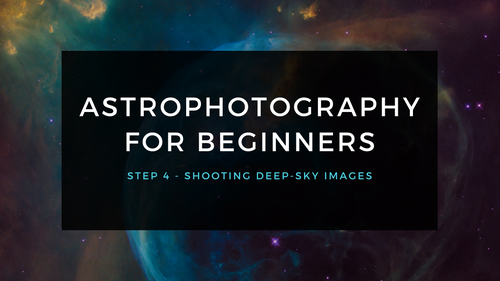
Astrophotographie pour les débutants Étape 4 : Prendre des images du ciel profond
Prendre des photos du ciel profond peut être intimidant, heureusement, il existe un processus simple à suivre pour vous permettre d'obtenir de superbes photos ! Voici le processus typique pour pren...
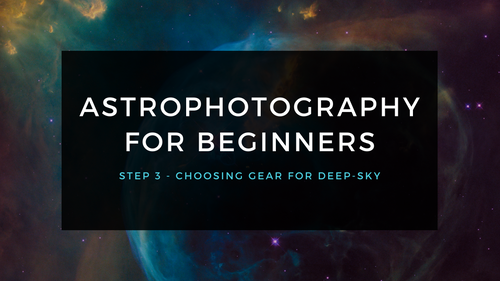
Astrophotographie pour les débutants Étape 3 : Choisir l'équipement pour l'imagerie du ciel profond
L'utilisation d'un capteur d'étoiles vous permet d'acquérir de l'expérience avec les principes fondamentaux de l'imagerie du ciel profond. Tirer sur la Lune vous permet d'acquérir de l'expérience ...
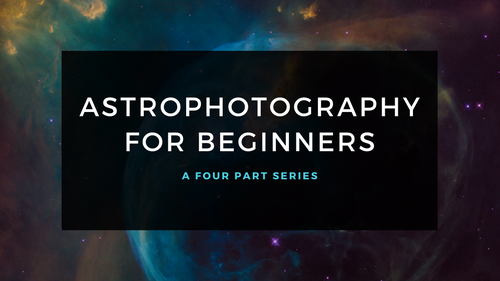
Astrophotographie pour les débutants - Commencer ici : Entrer dans l'astrophotographie étape par étape
Photographier le ciel nocturne n'a jamais été aussi populaire, ni aussi facile. Le choix d'équipement n'a jamais été aussi meilleur, ni plus abordable. Cependant, selon les conseils donnés par Dick...
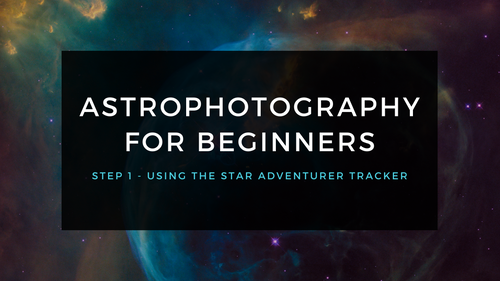
Astrophotographie pour les débutants Étape 1 : Utilisation du Star Adventurer Tracker
Le moyen de loin le plus économique et le plus simple de capturer de belles images de la Voie lactée et de grands objets du ciel profond comme la galaxie d'Andromède (illustré ici) est d'utiliser u...
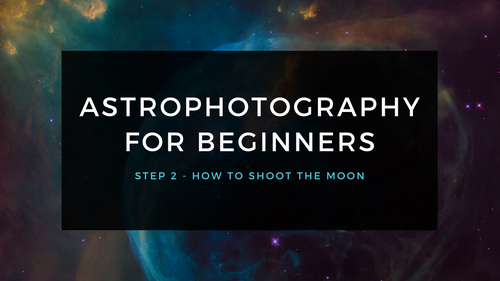
Astrophotographie pour les débutants Étape 2 : Comment photographier la Lune
Les gros plans de la Lune sont gratifiants et constituent un moyen facile d'apprendre à photographier à travers votre télescope. Bien que de bons résultats soient possibles avec un appareil photo d...

